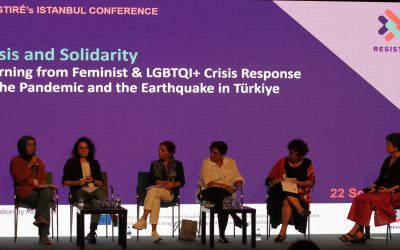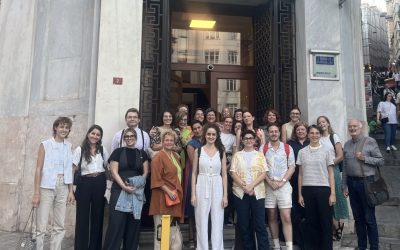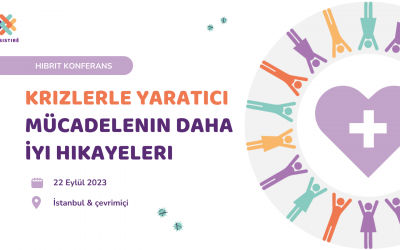NextGenerationEU is a €800 billion recovery plan to help repair the immediate economic and social damage caused by the coronavirus pandemic. Its main instrument, the Recovery and Resilience Facility, aims to make European economies and societies more sustainable and resilient. Although the RFF identifies women as one of the groups most affected by the health crisis and makes gender equality a cross-cutting priority, previous analyses have revealed that not all Member States have included measures that explicitly address gender-related challenges (Sapala, 2022).
This new RESISTIRÉ report takes a close look at National Recovery and Resilience Plans. It highlights that when they include actions to mitigate gender inequalities, it is mainly in the area of work, education and care. There is a striking lack of measures in other areas, such as power-sharing (decision-making and politics) and gender-based violence. Furthermore, gender is often considered in isolation, rather than in combination with other characteristics (such as age, social class, ethnicity, etc.). Without a framework that acknowledges intersectional experiences, policies may fail to adequately tackle gender inequalities. The plans have now been approved, but it is not too late to include a gender perspective in their implementation and monitoring. This is crucial for the EU to achieve gender equality.
NextGenerationEU, a plan which “leaves women behind”
The European Union presents NextGenerationEU (NGEU) as “more than a recovery plan. It is a once in a lifetime chance to emerge stronger from the pandemic, transform our economies, create opportunities and jobs for the Europe where we want to live.” The Recovery and Resilience Facility (RRF) is the centrepiece of NGEU. To obtain economic support from the RFF, the 27 EU countries had to submit National Recovery and Resilience Plans (NRRPs).
The regulation establishing the RFF stipulates that “gender equality and equal opportunities for all, and the mainstreaming of those objectives should be taken into account and promoted throughout the preparation and implementation of recovery and resilience plans”.
However, previous analyses have revealed that the RFF framework “leaves women behind” (Klatzer and Rinaldi, 2020) and that the NRRPs lack “targeted measures dealing exclusively with the situation of women” (Sapala, 2022). Gender equality is not included among the 11 main criteria set out by the regulation to assess the plans, and unlike the green and digital transitions, no specific budget is allocated to this issue.
National recovery plans under RESISTIRE’s scrutiny
RESISTIRÉ’s report adds to previous research in several respects:
- its results stem from an ambitious cross-country comparison: in addition to the National Recovery and Resilience Plans of the 27 EU countries, the equivalent recovery policies of 4 non-EU countries were also scrutinized (Iceland, Serbia, Turkey and the UK) ;
- it takes a close look at these plans by investigating numerous domains of gender inequalities: gender-based violence, work and the labour market, the economy, the gender pay and pension gaps, the gender care gap, decision-making and politics, environmental justice, health and education. These domains are based on the EC Gender Equality Strategy (2020-25) and on the Beijing Declaration and Platform for Action ;
- it adopts an intersectional, gender+ approach by recognising that gender and other characteristics (such as age, social class, nationality) can interact to shape complex inequalities ;
- it examines the involvement of civil society organisations in policy design and their main reactions to the content of the plans.
The methodology was the following: a network of researchers in the 31 countries filled grids established by the RESISTIRÉ consortium (see appendices of the report). Grids collected information on policies, design processes and reactions from civil society. These were then analysed by the consortium using thematic analysis.
Gender equality: despite being a transversal objective, few recovery plans really address it
In most cases, gender+ issues are mainly relegated to the level of a general reflection or a description of the context, without being linked to concrete solutions.
When available, policy measures aimed at mitigating gender+ inequalities are mostly found in the areas of work, education, and care. There is a striking lack of actions in other areas, such as power-sharing (decision-making and politics) and gender-based violence.
What is more, the plans have incorporated a certain number of stereotypes: women’s access to the labour market, lower wages or difficulties in career progression would simply be due to a lack of skills and education or the need to learn (male) management skills. In addition, there is still an excessive focus on male-dominated economic sectors.
An intersectional approach is entirely absent from most plans, and although there are measures relating to age, social class and disability, these grounds are usually presented as silos, without considering interactions between them. With few exceptions, discussion of inequalities related to religion/belief, gender identity and sexual orientation is absent.
Finally, RESISTIRÉ’s research shows that representatives of feminist, immigrant and LGBTQI+ organisations were hardly involved in the process of designing the plans. When it did happen, the process was tokenistic or lacked transparency.
How this report adds to previous findings and feeds into RESISTIRÉ’s recommendations
The first cycle of the RESISTIRÉ project showed that initial policy responses to the pandemic were rarely gender mainstreamed, and in only a few cases did they seek to mitigate inequalities related to gender+ dynamics.
The policies analysed in this report, mainly the NRRPs, started from different premises:
- first, they were designed with the specific intention of promoting recovery and resilience from the socioeconomic damages resulting from the pandemic dynamics;
- second, they were not designed under time pressure or emergency, which meant that they could be based on a better analysis of the situation and more reliable data;
- third, they were bound by a regulatory framework that required gender equality to be considered as a cross-cutting issue in their design.
However, despite these premises, the present analysis does not present a much better picture of policy efforts to mitigate gender inequalities.
Although the plans have now been adopted as they are, it is crucial that their implementation and monitoring include a gender perspective.
Discover RESISTIRÉ’s factsheets including recommendations addressing this problematic!



